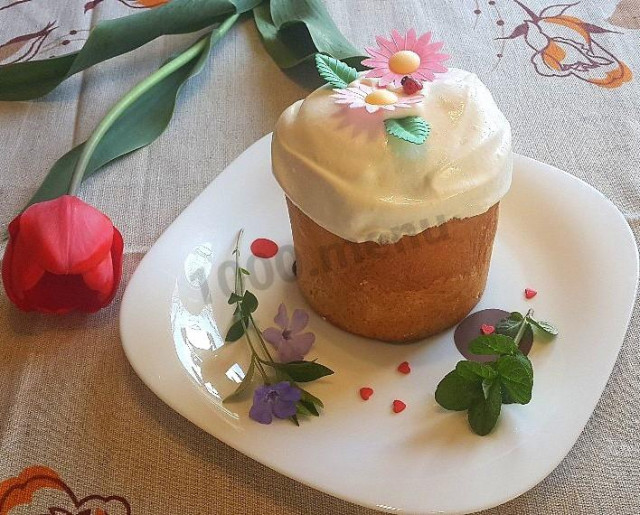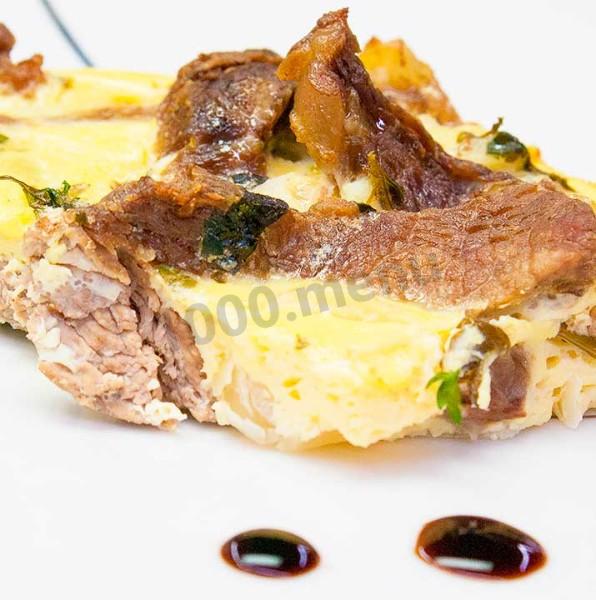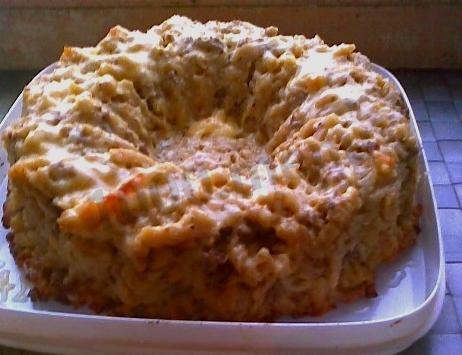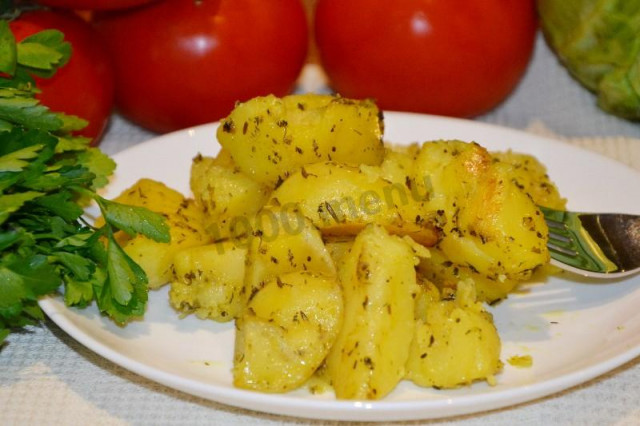Composition / ingredients
Step-by-step cooking
Step 1:
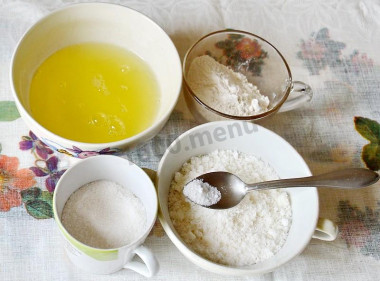
Products for making coconut Dacoise sponge cake. Sift wheat flour. Using a coffee grinder, we grind coconut chips to flour as follows, - in the "pulse" mode: press-release-shake. The resulting coconut flour can also be sifted through a sieve with large holes. Proteins must first be separated and thoroughly cooled in the refrigerator (I have them left after baking Easter cakes).
Step 2:

Add coconut flour to wheat flour. Mix thoroughly.
Step 3:

Whisk the protein with salt until it turns white. Add sugar.
Step 4:

Beat the protein mass to steady peaks.
Step 5:
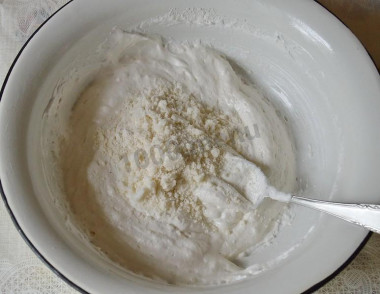
Carefully add the sifted dry ingredients and mix the mixture with movements from top to bottom until smooth.
Step 6:

Preheat the oven to 180 degrees. Cut out a circle of parchment paper with a diameter equal to the bottom of the baking dish, put it on the bottom, lubricate with oil. We put the dough into the mold: the middle of the cake should be slightly lower, and the side should be higher. You can put the coconut mass in a pastry bag with a round nozzle of 12-14 mm and, moving from the center in a spiral, plant the bottom of the base, and then the sides. For the sides, we plant the mass with large balls.
Step 7:

Bake coconut sponge cake for 20-25 minutes at 180 degrees. The cake should rise a little and turn brown, but, nevertheless, remain soft, because it is a sponge cake, not meringue. Don't over-dry it! We take the biscuit out of the oven, cool it. With a sharp thin knife, we draw along the edge of the mold and extract the biscuit from it.
Step 8:

Products for making strawberry filling. Sift the starch. We take fresh strawberries or defrost frozen ones.
Step 9:

Soak gelatin in a small amount of hot water, stir thoroughly and let it completely dissolve.
Step 10:

Strawberries are crushed with an immersion blender, you can also rub through a sieve. Add sugar and starch to the strawberry puree, mix well. We put the puree on the fire, let the starch brew.
Step 11:
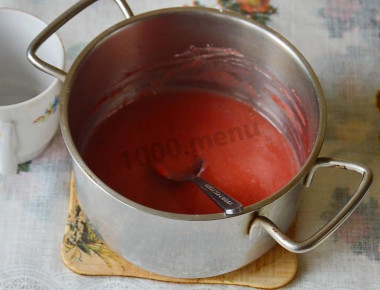
Remove the mass from the fire, add the gelatin that has already completely dissolved by that time, mix until smooth, cool.
Step 12:
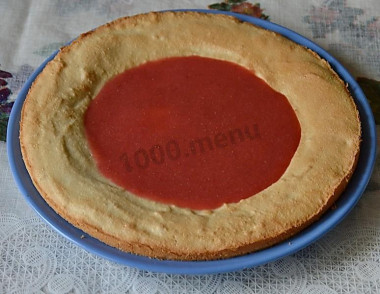
Fill the filling into the recess in the middle of the cake. But, if suddenly the cake turned out with an insufficiently high side, - in the center of the biscuit with a very sharp knife, we carefully outline a circle and select the dough a couple of millimeters deep, thus making a recess for the strawberry filling. We send the biscuit to the freezer for 15-20 minutes to speed up the hardening of the filling and continue the further assembly of the cake faster.
Step 13:
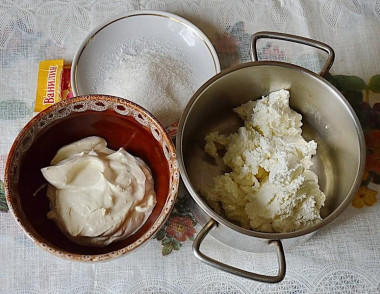
Products for making cream. Cream and cottage cheese should be well cooled.
Step 14:
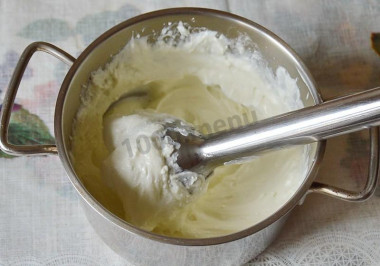
Punch the cottage cheese with an immersion blender with sugar and vanilla to a homogeneous consistency.
Step 15:
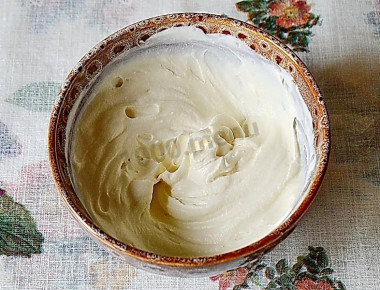
Separately, whisk the cream in a strongly cooled container until stable peaks.
Step 16:
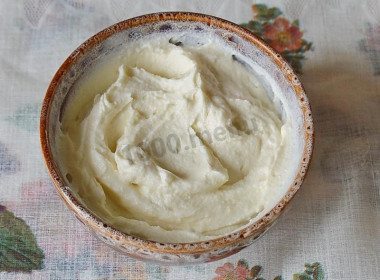
Combine a few spoons of cottage cheese with cream, mix gently. Gradually, we combine all the remaining cottage cheese with the curd-cream mass and send the finished cream to the refrigerator for 20-30 minutes. Cream can be fixed with a special thickener if the room is hot and there is a suspicion that the cream will float slightly at room temperature.
Step 17:

We put the cooled cream in a pastry bag with the nozzle that we like the most, and we put the cream around the perimeter of the cake, starting from the pink middle. I had enough cream to cover only this middle. Or you can make a little more cream and cover the entire surface of the cake with it. At the same time, it is better not to put the whole cream in a pastry bag at once. We make the cream on the cake in 2-3 fillings, and before that we cool our hands a little in cold water.
Step 18:
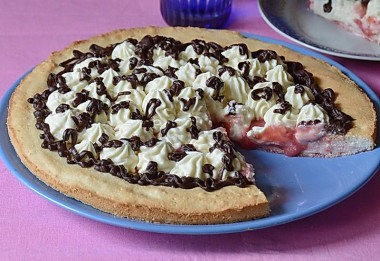
Again slightly cool the cake in the freezer (10-15 minutes), take it out and decorate to your liking. I poured melted chocolate over it. That's it, the cake is ready, help yourself!
In the original, Dacquoise is a cake originally from Southwestern France. The name comes from the French dacquois - means originally from the city of Dax (Dax is a small town in southwestern France).
In the modern world of confectionery art, dacoise is one of the most common types of sponge cake, which is used as a layer in many cakes. In fact, a dacoise is a meringue that has a sponge cake porous structure - that is, on the outside, the biscuit turns out to be crispy like meringue (meringue), but inside it remains soft and slightly moist.
The main ingredients of dacoise are ground nuts and egg whites. The proteins are whipped with sugar into a dense meringue, then gently mixed with a pre-sifted mixture of almond flour, wheat flour and powdered sugar. To give different shades of taste, various flavoring and aromatic additives are added to the biscuit dough: coconut chips, nut pastes and pralines, cocoa powder, vanilla extract. Due to the large amount of meringue, a small flour content and the absence of yolk, the biscuit turns out to be very light and airy. As a rule, the sponge cake is baked with a very thin layer of 2.5 - 3.5 mm and is successfully combined with most creams, mousses and fruit fillings.
Caloric content of the products possible in the composition of the dish
- Buttermilk - 36 kcal/100g
- Cream of 20 % fat content - 300 kcal/100g
- Cream of 10% fat content - 120 kcal/100g
- Cream - 300 kcal/100g
- Strawberries - 30 kcal/100g
- Fresh frozen sweet strawberries - 44 kcal/100g
- Cottage cheese of 40% fat content - 466 kcal/100g
- Cottage cheese of 20% fat content - 233 kcal/100g
- Cottage cheese of 18% fat content - 226 kcal/100g
- Cottage cheese of 10% fat content - 156 kcal/100g
- Low-fat cottage cheese - 75 kcal/100g
- Cottage cheese with sour cream - 260 kcal/100g
- Fruit cottage cheese - 147 kcal/100g
- Soft dietary cottage cheese - 170 kcal/100g
- Vitalinia cottage cheese - 64 kcal/100g
- Cottage cheese "morning" ( "danone") without sugar - 91 kcal/100g
- Cottage cheese - 156 kcal/100g
- Whole durum wheat flour fortified - 333 kcal/100g
- Whole durum wheat flour, universal - 364 kcal/100g
- Flour krupchatka - 348 kcal/100g
- Flour - 325 kcal/100g
- Granulated sugar - 398 kcal/100g
- Sugar - 398 kcal/100g
- Starch - 320 kcal/100g
- Gelatin - 355 kcal/100g
- Salt - 0 kcal/100g
- Coconut chips - 592 kcal/100g
- Vanillin - 288 kcal/100g
- Egg whites - 44 kcal/100g


